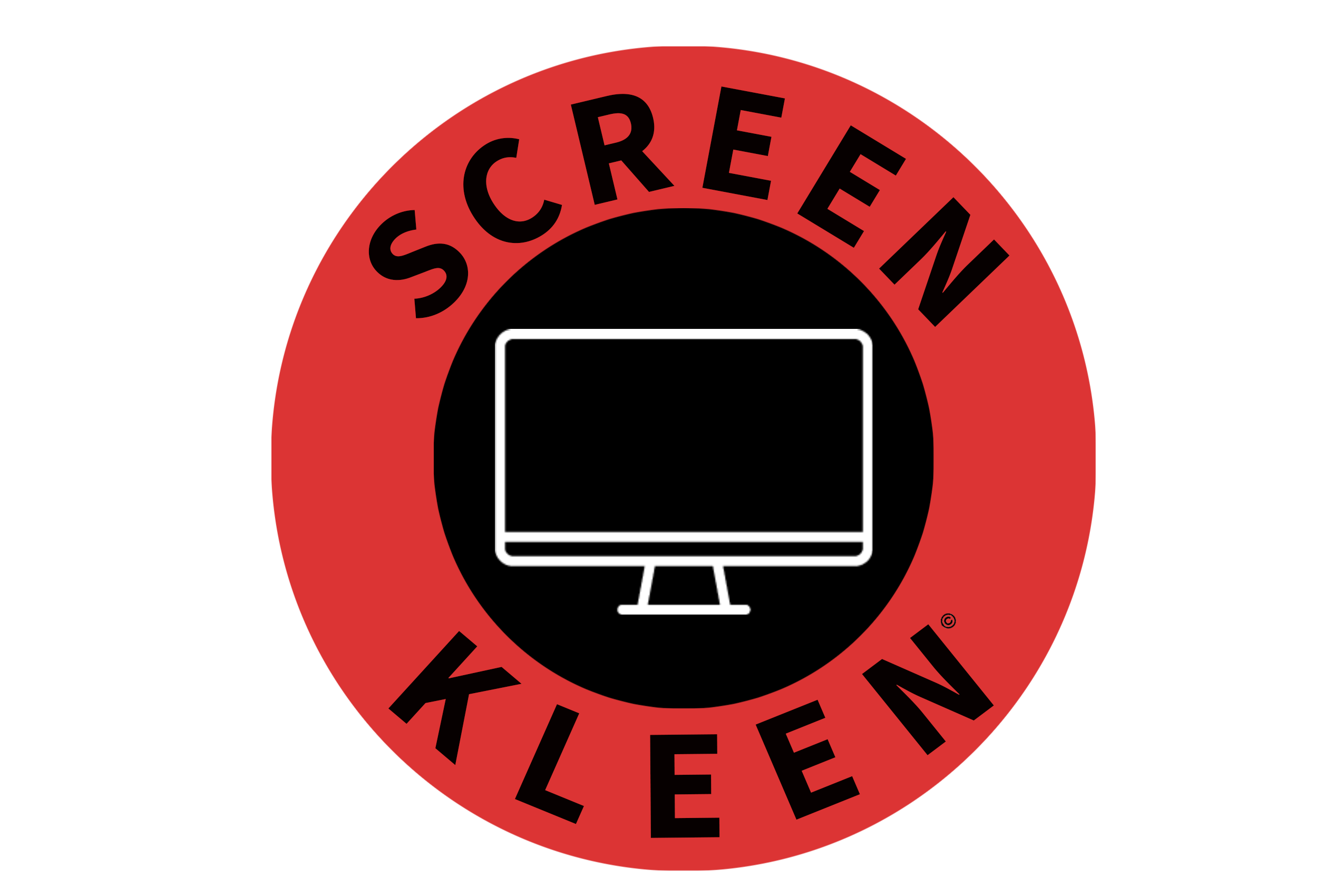Why Screen Kleen?
ONLY USE ORIGINAL SCREEN KLEEN
“Screens are made of Polycarbonate.” 90% of the computers and TVs sold in 2006 and thereafter, will incorporate polycarbonate screens. The good news is that polycarbonate doesn’t break easily... the bad news is, these screens oxidize, get cloudy, cause eye strain and eventually crack. The good news about owning a plastic TV screen is that it can take a lot more abuse. It won’t break as easily as glass. However, just as metal rusts, polycarbonate screens oxidize over time.
“Screen Kleen Cleaning fluid must be pH balanced.” For a cleaning fluid to be safe and effective on polycarbonate coatings it must be pH balanced (neutral) and leave no visible residue. The blend of ingredients must also be kept in a stable and safe form and should not contain alcohol, ammonia or phosphates.
”Oxidation is a slow process, unless you choose to speed it up." The first sign that a screen is oxidizing is when it appears to be getting a little grey around the edges. At first it looks like you should have your eyes checked when it’s really just your screen in the beginning stages of oxidation. In time, small lines will begin to appear; this is called crazing. Oxidation will continue to move across the screen, weakening it until one day it cracks. The best way to make sure you aren’t harming your screens, CDs and DVD’s is to... drop that dust cloth and that bottle of window cleaner.
"Tested by PROFESSIONALS." A product committee of Service Dealers tested Screen Kleen on big screen TVs. Screen Kleen was found to be free of harmful chemicals and did not leave any harmful residue. Its widely accepted that use of caustic household cleaners is one of the leading causes of oxidation. Polycarbonate fabricators, the pros who make a living shaping polycarbonate, are very aware of and preach against the use of window cleaners with alcohol or other additives because of the damage they can cause. Even some opthamalic cleaners contain caustic ingredients that cause polycarbonate screens to haze, warp and ultimately crack.
“Screens are dust magnets”. The second leading cause of oxidation is airborne dust particles. Dust particles are very visible on a TV or computer screen because all screens have one thing in common. As long as a screen is on, electric current passes through it and builds up static charge. This static charge attracts airborne dust to the screen Even when it’s turned off, the static charge is transferred to the dust particles and the screen becomes a virtual ‘Dust Magnet’. The problem with dust on a computer or TV screen, besides obscuring your picture, is that much of the dust contains harmful chemicals that cause polycarbonate to oxidize. These chemicals originate from household cleaning agents such as ammonia or butylcell solve...(used to clean carpets).
"Don't wipe away the anti-glare on your TV" The wrong cloth literally wipes away most anti-glare treatments. Using a cloth with a high-abrasion factor can literally destroy an anti-glare screen. Most micro-fiber cloths being sold to clean screens are too abrasive for anti-glare screens.
"If it hasn't been tested ho do you know?" Screen Kleen was first successfully tested in the optics industry on small sensitive plastic lenses to make sure it was safe for delicate lenses with anti reflective coatings. It’s very important that a cleaner and cleaning cloth does not destroy either the polycarbonate or anti-glare coating on a lens or a TV screen. Colt Laboratories, who developed the abrasion and cleaning test for the optical industry, rates Screen Kleen’s micro fiber cloth as only the second product they ever tested with such positive results.
“Beware of imitations". Micro fiber has become very popular in the U.S. and we all know from experience, when something becomes popular, it tends to attract a lot of “me-too” manufacturers to enter the marketplace with cheaper, lower-quality products. So, just as there are different levels of quality in notebook computers and TVs, there are also different levels of quality in micro fiber.
"Only use the original SCREEN KLEEN micro fiber cloth." Unlike other micro fiber cloths, Screen Kleen’s micro fiber cloth uses a proprietary, double density fabrication technique that gives you triple the cleaning surface of any other micro fiber cloth. Because we use no adhesives or binders in the fabrication process, we can actually shrink the micro fiber by 40% of it’s original size. The result is, more than triple the filament-cleaning surface than competitive cloths. The extra cleaning surface allows you to lift and remove more dust and lint. Plus, it actually lifts oil and fingerprints without danger of scratching or removing coatings.
"Same results using microfiber as with alcohol." Even used dry, as a dusting cloth, great micro fiber cloths are able to remove not only visible dirt, but, as demonstrated in Swedish hospital tests, bacteria as well. According to Ade Gustafson, Executive Product Manager at Sweden’s KBM, “We got the same results cleaning with micro fiber cloths as with alcohol disinfecting.” Daniels Associates, a Canadian testing firm backed this conclusion. They reported; bacteria measured on the counter surfaces dropped by a whopping 96 percent after cleaning with a micro fiber cloth.
